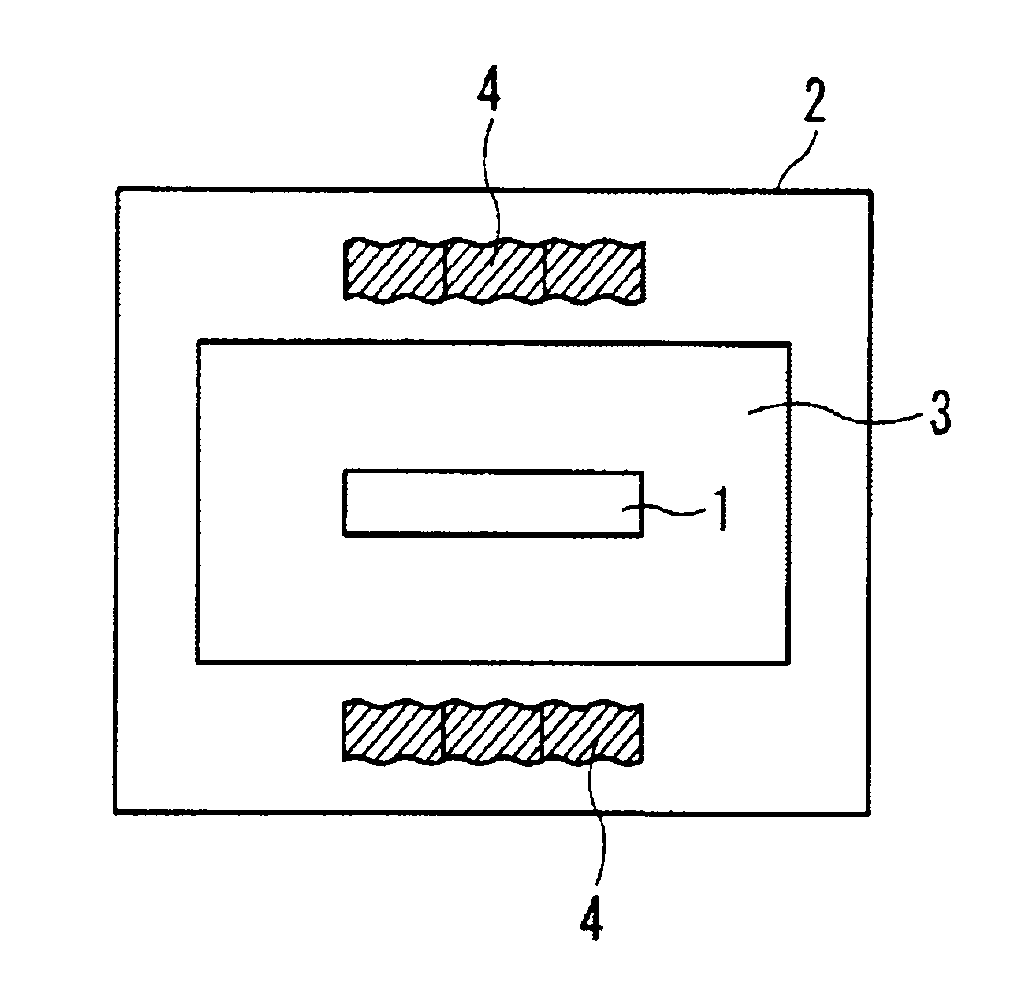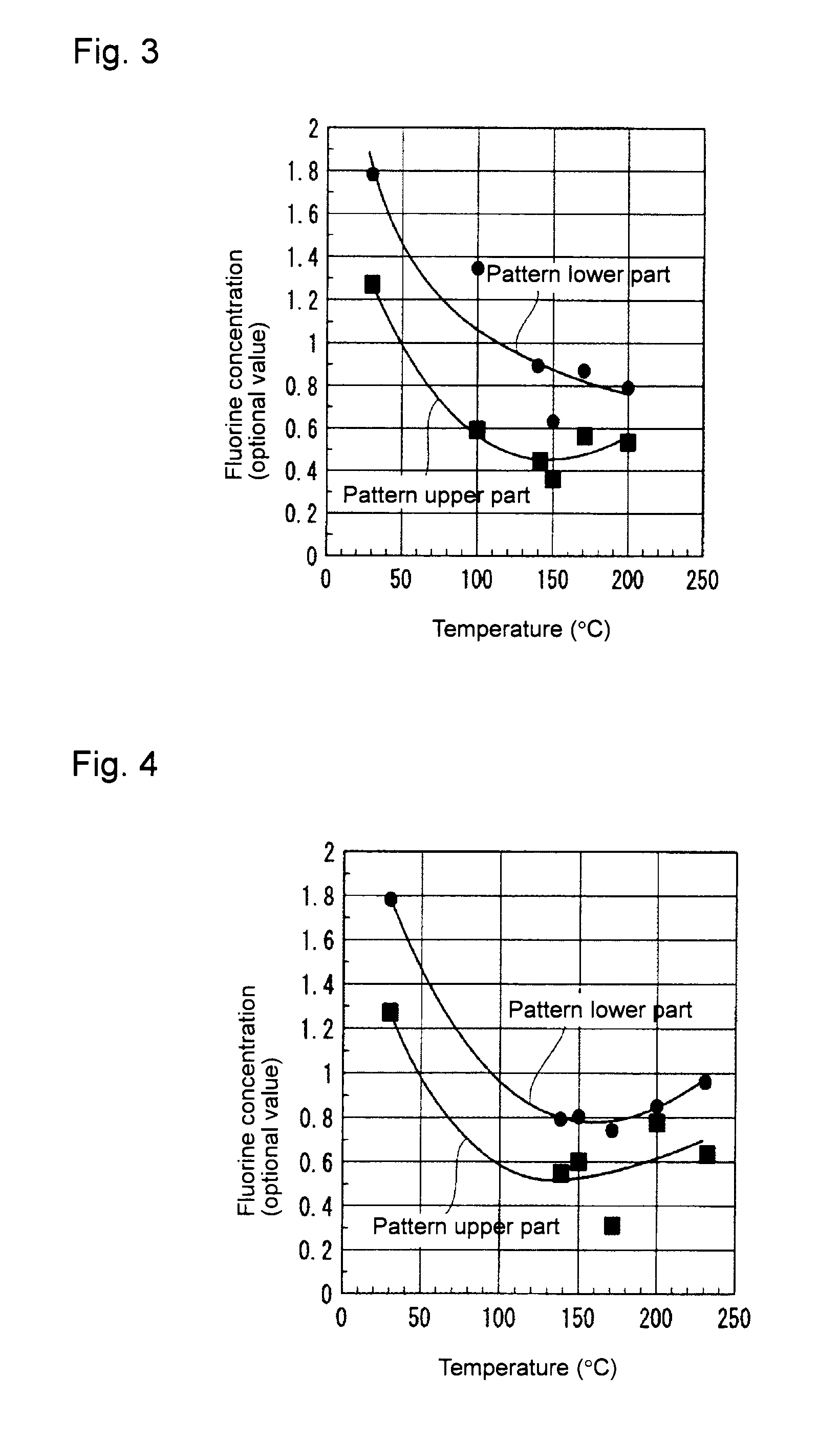Method for cleaning with fluorine compound
a fluorine compound and cleaning method technology, applied in the field of cleaning methods, can solve the problems of inability to obtain high-level cleaning effects and achieve the effect of high-level cleaning
- Summary
- Abstract
- Description
- Claims
- Application Information
AI Technical Summary
Benefits of technology
Problems solved by technology
Method used
Image
Examples
first embodiment
A. Examples for the Present Invention
[0162]In Table 2 are shown cleaning effects when a plasma-polymerized film was cleaned by using fluorinated solvents comprising various fluorine compounds. The fluorinated solvent (cleaning liquid) comprises 100 mass % of a fluorine compound shown in Table 2. As an object to be cleaned, a plasma-polymerized film (solid film not patterned) having a thickness of from 800 to 900 nm deposited on a silicon substrate using C4F8 gas plasma was used.
[0163]Details under “Cleaning conditions” shown in Table 2 are shown below.
[Cleaning Conditions]
[0164](1) 30° C.: A substrate was immersed in a fluorinated solvent having its temperature adjusted to 30° C. under atmospheric pressure for 60 minutes, and then dried by heating in an oven at 120° C. for 1 hour.[0165](2) Boiling: A substrate was immersed in a fluorinated solvent in a boiling state by being heated to the normal boiling point or higher under atmospheric pressure for 1 hour, and then taken out.[0166]...
example 1
[0189]On a silicon substrate, a resist pattern having a width of from 50 to 300 mm was formed by known photolithography. This silicon substrate was etched by alternate treatment with SF6 gas plasma and C4F8 gas plasma to form a pattern comprising silicon.
[0190]Then, the substrate was placed in a container capable of being closed, and a fluorinated solvent comprising C6F13CH2CH3 (Test Example 7) was introduced into the container so that the substrate was immersed in the fluorinated solvent.
[0191]The container was closed, and the temperature in the container and the temperature of the fluorinated solvent were raised to 170° C. and in addition, the container was closed and the pressure in the container was adjusted to 0.5 MPa by a back pressure valve, whereby the fluorinated solvent was converted to a liquid at high temperature of at least the normal boiling point (hereinafter referred to as a high temperature liquid). 30 Minutes later, while the temperature in the closed container was...
example 2
[0193]A substrate was immersed in a fluorinated solvent for 30 minutes in the same manner as in Example 1, and then the heater of the closed container was turned off and in addition, the fluorinated solvent was discharged outside the closed container, and the container was taken out from the substrate. The taken out substrate was heated to 100° C. under vacuum of 0.1 Pa, and the fluorinated solvent remaining on the substrate surface was vaporized to dry the substrate.
[0194]On the substrate after cleaning, the plasma-polymerized film attached to the pattern side wall was dissolved and removed.
PUM
 Login to View More
Login to View More Abstract
Description
Claims
Application Information
 Login to View More
Login to View More - R&D
- Intellectual Property
- Life Sciences
- Materials
- Tech Scout
- Unparalleled Data Quality
- Higher Quality Content
- 60% Fewer Hallucinations
Browse by: Latest US Patents, China's latest patents, Technical Efficacy Thesaurus, Application Domain, Technology Topic, Popular Technical Reports.
© 2025 PatSnap. All rights reserved.Legal|Privacy policy|Modern Slavery Act Transparency Statement|Sitemap|About US| Contact US: help@patsnap.com



